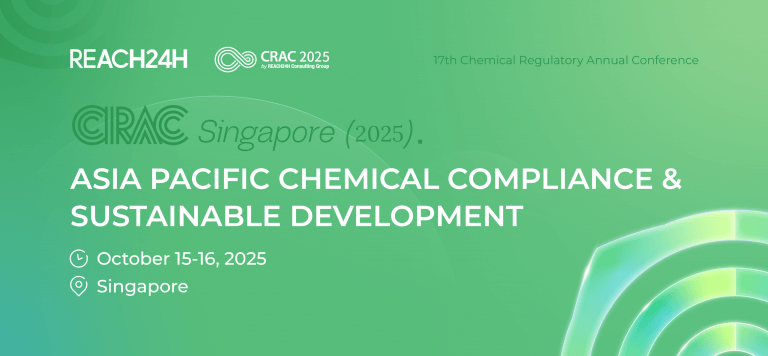Introduction
In order to ensure the safety of the public and alleviate the burden on the industry, the Ministry of Environment of Korea (MoE) has announced significant amendments to the Act on the Registration and Evaluation of Chemical substances in Korea (K-REACH), on February 6, 2024, which proposes to subdivide the toxic substance management system into three groups: Acute hazardous Substances to Humans, Chronic hazardous Substances to Humans, and ecologically hazardous Substances (collectively referred to as "Hazardous Substances Affecting Humans and the Environment").
The new regulations will officially take effect on August 7, 2025.
What Are the New Toxic Substances Classifications?
| Original substance category | Subcategory | Definition | Determination Criteria (Fulfilled if any one criterion is met) |
| Toxic Substance | Acute Hazardous Substance to Humans | Chemical substances that may cause adverse effects on human health following single or short-term exposure. | Acute Toxicity (Oral, Dermal, Inhalation) (Categories 1–3), Skin Corrosion (Categories 1A, 1B, 1C), Specific Target Organ Toxicity—Single Exposure (Category 1) |
| Chronic Hazardous Substance to Humans | Chemical substances that may cause adverse effects on human health following repeated exposure or after a latency period following exposure. | Repeated Exposure Toxicity (Category 1), Mutagenicity (Category 1), Carcinogenicity (Categories 1A and 1B), Reproductive Toxicity (Category 1) | |
| Environmentally Hazardous Substance | Chemical substances that may cause adverse effects on aquatic organisms or the environment resulting from short-term or long-term exposure. | Acute Aquatic Environmental Hazard (Category 1), Chronic Aquatic Environmental Hazard (Category 1) |
As the implementation date approaches, the National Institute of Chemical Safety (NICS) released the latest Toxic Substances Designation Announcement on July 8, 2025. This announcement includes updated definitions and a detailed list of substances classified as Hazardous Substances Affecting Humans and the Environment.
Changes in Mixture Management Under K-REACH
The new regulations also introduce changes in the classification of mixtures:
Hazard Classification Based on Concentration: Different concentrations of the same substance in a mixture may result in varying hazard classifications.
Threshold Concentrations: The list specifies threshold concentrations for each hazard category.
Example:
For Nitrobenzene (CAS No. 98-95-3):
Under the old standard: The mixture classified toxic if concentration ≥0.3%.
Under the new regulations:
Concentration ≥0.3%: Classified under Chronic Toxicity to Humans.
Concentration ≥25%: Also classified under Acute Toxicity to Humans.
Implementation Timeline for New K-REACH Regulations
General Implementation: The new classifications for substances listed in the appendix will take effect on August 7, 2025.
Special Case for Benzene: Mixtures containing Benzene(CAS No. 71-43-2) at concentrations between 0.1% and 1% will have an extended effective date of August 7, 2027.
Corporate Compliance Obligations Under K-REACH
Companies must adhere to the following compliance requirements:
Substance Safety Information:
According to Article 29 of K-REACH, companies transferring substances that have been registered or notified, hazardous substances within the registration grace period (including the original "toxic substances", i.e., "Hazardous Substances Affecting Humans and the Environment"), and substance of unknown hazard classification must provide substance safety information (such as: Document 25, Document 26, MSDS, etc.) to the transferee.
Updated Safety Information:
Companies must revise and provide updated substance safety information reflecting the new classifications.
Deadline for providing updated safety information: July 1, 2026.
Why Is This K-REACH Revision Important?
The revised classification system offers several advantages for businesses:
Enhance Risk Assessment: More precise hazard classifications lead to more comprehensive risk evaluations.
Improve Market Responsiveness: Differentiated Management enables companies to adapt more effectively to market demands and regulatory inspections.
Streamline Compliance: Tailored regulatory measures reduce compliance burdens while maintaining safety standards.
If you have any questions in K-REACH compliance, please feel free to contact us at customer@reach24h.com.





